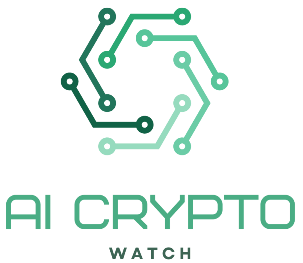“There is no reason to build an L2. L1s can be faster, cheaper, and more secure.”
That was the response from Solana co-founder Anatoly Yakovenko after X user @ripdoteth claimed that layer-two networks can be faster, cheaper and more secure, and are just being slowed down by layer-one networks.
“They aren’t slowed down by a glacially moving L1 data availability stack, or have to compromise security with complex fraud proofs and upgrade multisigs.”
Anatoly Yakovenko, Co-Founder, Solana

The Difference Between L1s and L2s
Layer-one (L1) networks are typically referred to as the major blockchains. Technically, an L1 is the base level of every blockchain.
The most well-known L1s include Bitcoin, Ethereum, Solana, Litecoin and Binance Smart Chain.
Most L1s face scalability issues—they cannot handle large volumes of transactions. This is why layer-two (L2) networks were developed.
L2s are designed as a scaling solution on top of an L1 to improve the latter’s speed and efficiency. Essentially, transactions are processed on third-party networks—these L2s—rather than on the L1. This reduces congestion on the main network, resulting in shorter processing times and lower fees.
Some of the best-known L2s include Base, Arbitrum and Optimism for Ethereum, and Stacks and Lightning Network for Bitcoin.
The notion that L1s have scalability issues was challenged in 2017, when Solana was launched as an open-source blockchain built by Solana Labs and run by the Solana Foundation. It was designed to host decentralized applications in the Web3 ecosystem.
According to the online publication Investopedia, Solana is significantly faster in terms of the number of transactions it can process and has much lower transaction fees than rival blockchains like Ethereum.
This is largely due to Solana’s proof-of-history (PoH) consensus mechanism. Introduced by Yakovenko, PoH is described as a technique for keeping time between computers that do not trust one another.
Counterarguments to Yakovenko’s Claim
Claim #1: What happens when the amount of data we want to store on blockchains grows exponentially? What are the limits of keeping everything in a single blockchain?
Yakovenko responded that even if 8 billion global users made three transactions per day, Solana would still have sufficient throughput. Throughput refers to the capacity of a network to process transactions in a given time.
Claim #2: L1s can’t scale to accommodate 8 billion global users. L2s are needed no matter which chain you see leading the way.
As per Yakovenko, even if the 8 billion global users will have three transactions per day, there will still be enough throughput on Solana. A throughput is the capacity of a network to process transactions in a given time.
How Solana is Working Out on Its Scalability
In May 2024, Yakovenko shared through an X article that Solana was adding one million new accounts per day, with the network holding a total of 500 million accounts at that time.
He admitted that the snapshot size on the PoH network was 70 gigabytes but assured that it was manageable as the team continued to improve Solana’s hardware. In blockchain, a snapshot refers to recording the state of network hardware at a specific point in time.
“The goal of the SVM runtime is to provide the cheapest possible way to access the hardware, and to achieve that the state and memory have to be managed within current hardware constraints.”
Anatoly Yakovenko, Co-Founder, Solana
He proposed initiatives to reduce snapshot sizes and enhance transaction processing without sacrificing performance. These include three “terrible names”: Chilly, Avocado and Less Stupid Rent (LSR).
- Chilly will serve as a runtime cache that manages frequently accessed accounts for improved transaction efficiency.
- Avocado will address state and index compression by replacing stored account data with hashes and migrating the account index to a binary trie structure.
- LSR, officially known as Lightweight Simple Rent, will reintroduce Rent—a pricing model for allocating new accounts and ensuring that abandoned accounts are eventually compressed, reducing system load and costs for new users.
“Terrible names are usually an indicator of great software design. Anza and Firedancer engineers were locked together in a room until they could solve these problems and they have come up with the following.”
Anatoly Yakovenko, Co-Founder, Solana
This article is published on BitPinas: Solana’s Anatoly Yakovenko Says There’s No Need for L2s: “L1s Can Be Faster, Cheaper, and More Secure”
What else is happening in Crypto Philippines and beyond?


